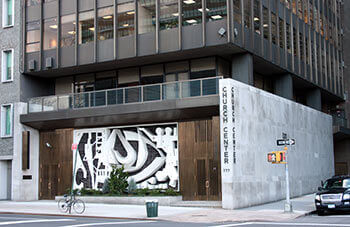|
||||
I. CULTURE OF TRIVIALITY Because of what occurred on September 11, 2001, people tend to forget the American cultural climate during the years before this event. Stories in the media revolved around gossip, scandal and sleaze, focusing on people like O. J. Simpson, Princess Di, Michael Jackson and Gary Condit (the Congressman who had an affair with his intern). It seemed that people in the United States had withdrawn psychic energy from “big” foreign policy issues—and the grand narrative of warfare. II. A COUNTER-SACRIFICIAL CULTURE The belief that it is honorable and noble to sacrifice one’s life for one’s nation dominated Western political culture during the first half of the Twentieth Century. This segment examines how the ideology of sacrifice—dying for a cause—nearly disappeared from American culture during the 1990s. A profound “aversion to casualties” developed. Americans hesitated to become engaged in political conflicts if there was even a slight possibility that soldiers might be killed. III. AVERSION TO CASUALTIES American aversion to battle casualties grew out of the Vietnam War and the televised return of “body bags.” In 1999, Henry Kissinger observed that during the Nixon administration in 1969, the United States was suffering 500 casualties a week—but that now Americans were unwilling to accept any casualties. This segment explores the American policy of casualty aversion and how John Lennon’s fantasy that someday there might be “nothing to kill or die for” seemed to be coming true. IV. AMERICA IS NOT WEAK Military analysts in the 1990s argued that policies of America’s enemies were based on calculations that the United States was unwilling to suffer casualties. Bin Laden reminded Defense Secretary Perry in 1996 of how the U. S. had withdrawn from Mogadishu after only a few soldiers had been killed. The extent of America’s “weakness and impotence,” Bin Laden said, had become clear. In this segment, we discuss the hypothesis that the ferocity of America’s military actions after September 11 were designed to prove that the United States was not weak—to reaffirm the omnipotence of America. V. AMERICA IS WILLING TO SACRIFICE Responding to a reporter’s question about America’s willingness to persist in the face of the Iraqi insurgency, Secretary of Defense Rumsfeld insisted that enemies of the U. S. should not underestimate the willingness of Americans to “suffer casualties in Iraq & elsewhere.” President George Bush declared that although some had doubted the American character, our troops had demonstrated their courage and willingness to sacrifice. This segment explores willingness to wage war in relationship to American idealism: As young Moslems were martyring themselves for Allah, so young Americans would sacrifice their lives for freedom and democracy. VI. OVERCOMING AVERSION TO CASUALTIES In the first year of the war, questions arose in the minds of commentators: In the face of a ten-year policy of casualty-aversion, would the United States retreat when body-bags began to return? Columnist Ben Shapiro wrote: “We’re not in Mogadishu anymore.” Charles Krauthammer stated that no one should underestimate America’s capacity to “sustain casualties when attacked and engaged in an existential struggle.” In this segment, we discuss the renewal of America’s will to wage war: Never again would the United States “cut and run” in the face of an evil enemy. VII. RECOVERY OF THE IDEOLOGY OF WARFARE In this segment, we discuss the resurgence of the idea of warfare as a valid foreign policy option. Donald Rumsfeld stated that although casualties are unfortunate, there are “things worth fighting for and things worth dying for.” Speaking of the September 11 attacks, George Bush declared that “out of this evil will come good as youngsters all of a sudden understand the definition of sacrifice.” Sacrifice, heroism, and the necessity of fighting for a noble cause—ideals that had begun to seem obsolete—reemerged in the rhetoric of American leaders. Warfare made a comeback. VIII. SACRIFICIAL WILLINGNESS In this segment, we analyze and discuss the case of Pat Tillman, a National Football League player who abandoned a multi-million-dollar contract and new wife to join the army—and was killed in Afghanistan. Tillman’s story received national publicity. It appears that many people were thrilled to know that some young Americans still possessed patriotic fervor and were willing to sacrifice their lives for their country. What is the nature of the gratification people obtain when they contemplate sacrificial death? IX. RETURN OF SERIOUS NEWS Following September 11 and the wars in Afghanistan and Iraq, journalism returned to its traditional focus on foreign policy issues and violent political conflict. While the mass-media culture of gossip, trivia and sleaze by no means disappeared, the portentous world of warfare and death re-established its presence. Many people seemed pleased that “serious” news had made a comeback. X. DESTROY THE EVIL ENEMY After the fall of the Soviet Union in 1989, the “grand narrative” of a struggle between the free-world and communism dissipated. Was America suffering from the absence of an enemy. In this segment, I discuss the hypothesis that the struggle against terrorism replaced the struggle against communism. Once again, a binary world of good and evil came into existence. Again, the United States could act out its world-historic mission: to destroy evil in order to make the world safe for freedom and democracy. XI. WHICH SIDE CAN DIE THE LONGEST? Bin Laden and other Islamic Eastern radicals often taunted leaders of the United States: “We love death the way you Americans love life.” They seem to be saying: “We Moslems have ideals for which we are willing to die and kill, whereas you Americans possess no such ideals.” In this segment, we discuss the hypothesis that when leaders of the United States waged war and refused to back down, it was as they were saying: “We too possess ideals for which we are willing to die and kill.” The war in Iraq became a form of sacrificial competition: Which side could die the longest? |
